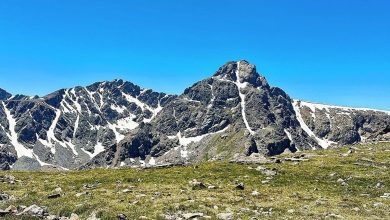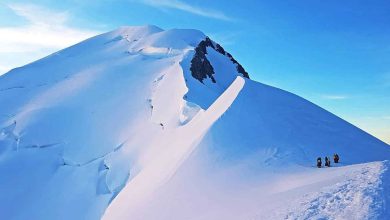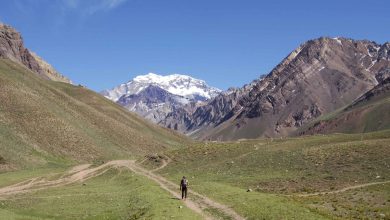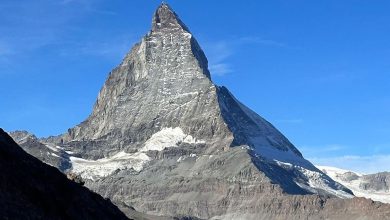Mount Mera: The Highest Trekking Peak In Hinku Valley
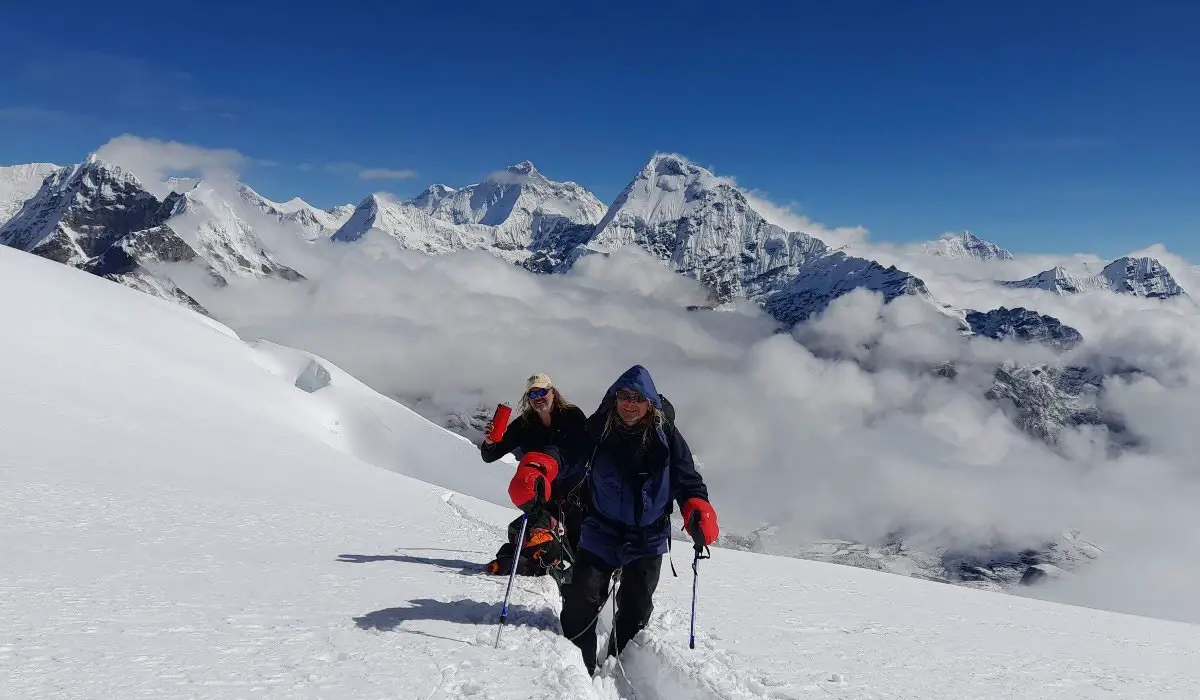
Mount Mera is a peak that stands at the height of 6,476 meters (21,247 ft) and is situated in the Mahalangur section, Barun sub-section of the Himalaya and the Sagarmatha Zone in Sankhuwasabha. This mountain is best known as a trekking peak. There are three more prominent peaks within Mount Mera, namely, Mera North, 6,476 meters (21,247 ft); Mera Central, 6,461 meters (21,198 ft); and Mera South, 6,065 meters (19,898 ft).
Mount Mera is also known as the highest trekking peak in Nepal, as it goes way above 6000m above sea level. The south of the peak is distinctly recognized as a different peak, but it is not shown as such in the map.
There are several interesting facts that you may want to know about Mount Mera. Make sure to read till the end of this article to know more!
Mera Peak climbing
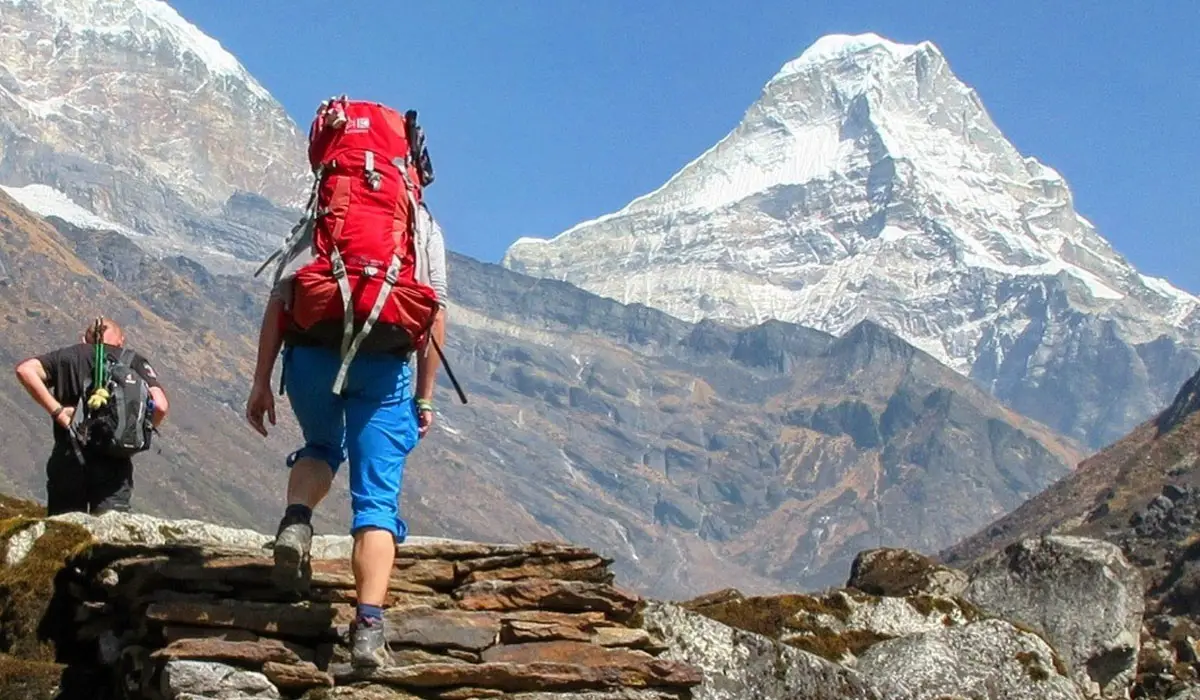
Mera Peak is one of the most popular trekking mountains in the world which is located in Nepal. The mountain has been considered even tougher to climb than Mount Kilimanjaro. Hence, one must have trained well with strength and worked on his physical fitness to be able to climb the peak. You can consider climbing to the Mera Peak difficult. There is frequent snow at the peak. This adds a level of difficulty for many visitors. Also, you should acclimatize properly when you are on Mera Peak because if not, you will have a suffocating experience as you climb the many flights of stairs that are present on Mount Mera climb.
Another thing to keep in mind is that Mera Peak climbing is not meant for beginners until he is physically fit and habituated to extreme physical activities. Acclimatization at the earlier part of the climb while remaining completely prepared for what awaits you is important. During your climb, you are likely to see small villages, rugged yet green areas, and snow.
Khare, at the height of 4,950m/ 16,240 feet, is definitely a relief for a lot of climbers who are looking for a place to rest. You can enjoy the beautiful scenery around the Mera Peak area when you are in Khare. Many mountaineers or trekkers tend to climb a little above the height of 5000m and finally come back to acclimatization at Khare. When you have perfectly acclimatized your body, you will have a great time succeeding in your Mera Peak climbing.
Mera Peak Difficulty- Is it harder than the island peak?
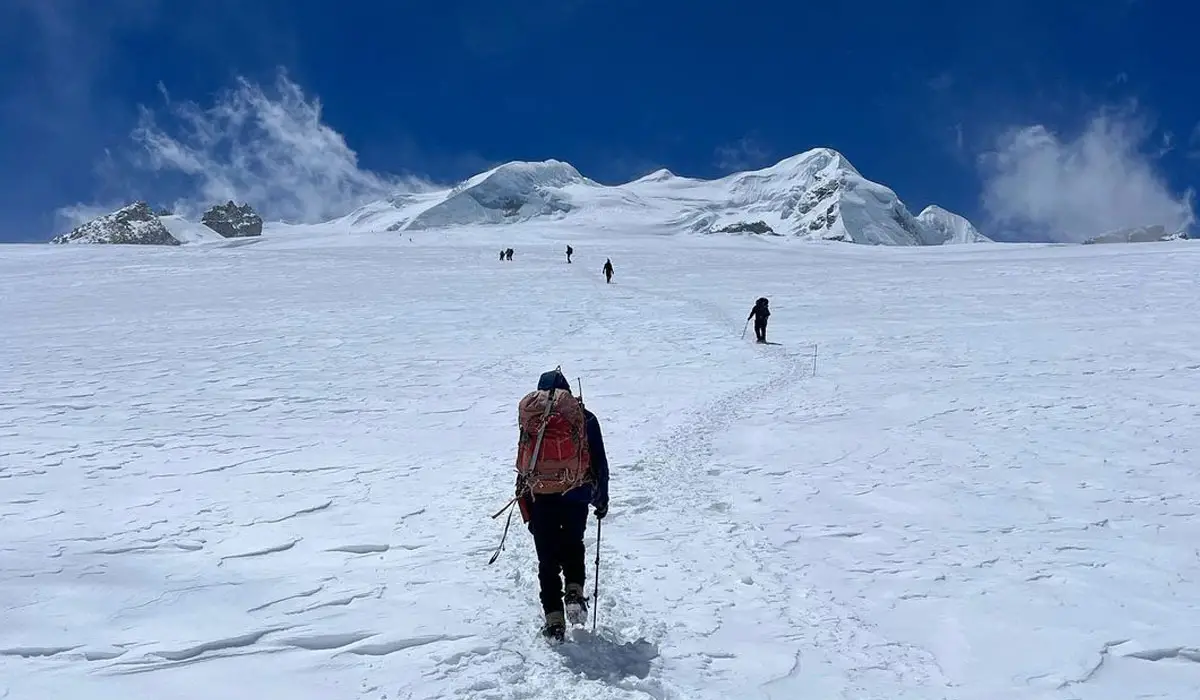
Mera Peak is quite difficult to climb. You will have difficulty going back and forth in the mountains if you are a beginner. But a person who has had a fair amount of experience in mountaineering, rock climbing, or physical training can succeed in the summit of the mountain without as much difficulty. However, this really does not mean that Mera Peak is not difficult to climb because it is. You should always remain cautious and carry along crampons and ice axes to ensure safety for yourself. Likewise, upon comparison with other peaks like the Island Peak and Mount Kilimanjaro, climbers have claimed that Mera Peak is much more difficult. Speaking of th grade, Mount Mera has a difficulty level of Grade PD (Peu difficile).
However, Mera Peak’s success rate is 90%, which shows evidently that climbers who make an attempt to the mountain have succeeded in doing so to a great extent. You must keep in mind that you are choosing the right route and trail, though.
Mount Mera Location
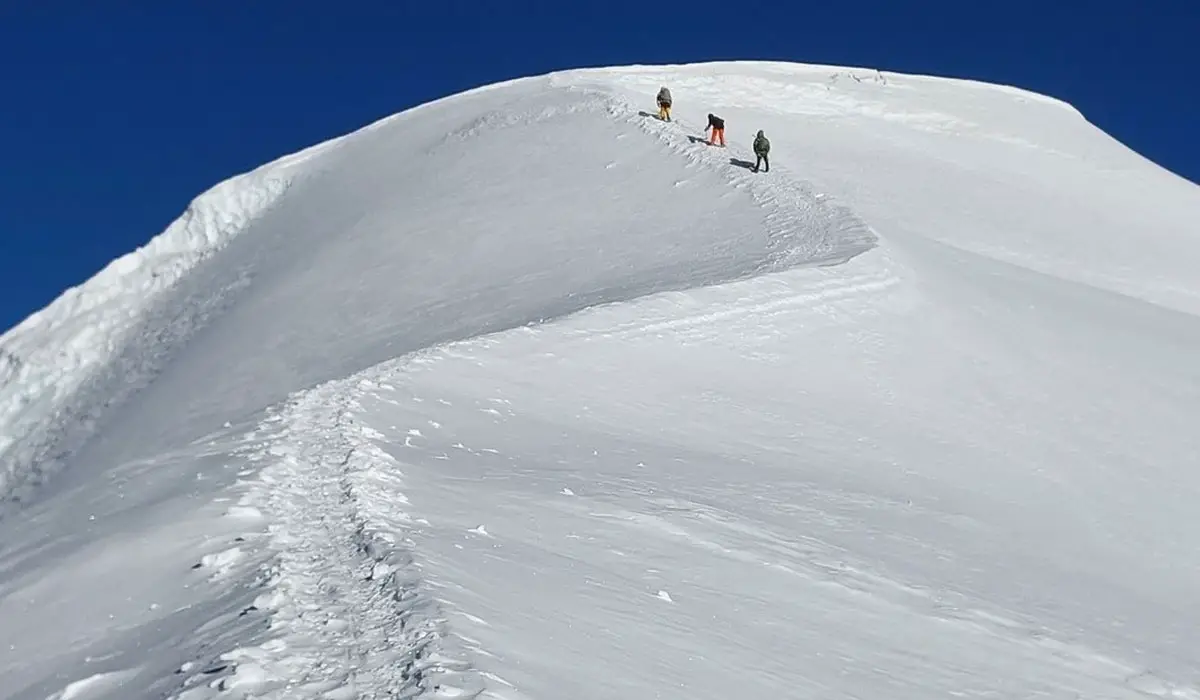
Mount Mera is located in the Mahalangur section, Barun sub-section of the Himalayas, and is a part of the Sagarmatha region in Nepal. Mera Peak was discovered by the British expeditors in the early 1950s. The members of the people who found the mountain include the first climbers of Mount Everest, namely Edmund Hillary, Tenzing Norgay, Eric Shipton, and George Lowe. Col. Jimmy Roberts and Sen. Tenzing made the first ascent of the central Meka Peak on May 20, 1953. Upon having made a great contribution to the trekking industry in Nepal, Roberts received the “Sagarmatha (Everest) National Award” from the government in May of 2005.
Who climbed Mera Peak for the first time?
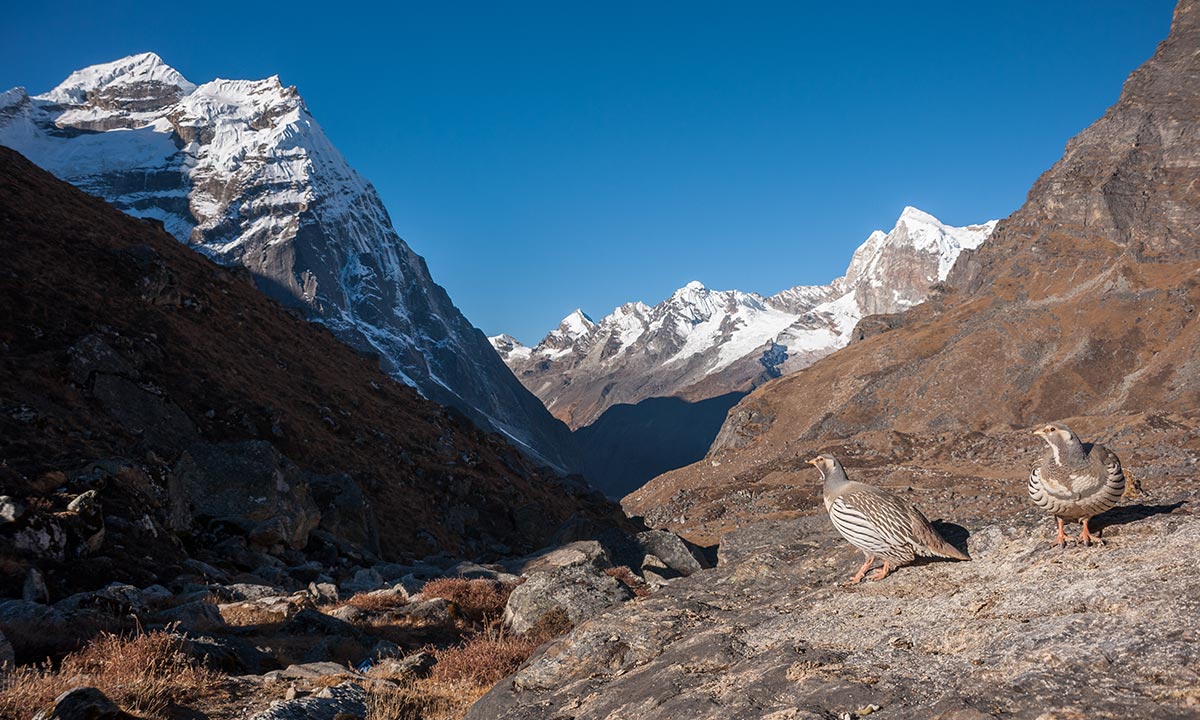
Col. Jimmy Roberts and Sen. Tenzing made the first ascent of the Mera Peak in 1953. Likewise, French climbers Marcel Jolly, G. Baus, and L. Honills made the first climb of the Mera North in 1975. However, there have been claims of the peak having been climbed two years earlier by L. Limarques, Ang Lhakpa, and two other Sherpas. The Mera Peak southwest pillar was first climbed by Mal Duff and Ian Tattersall in 1986. The route is 1,800 metres (5,900 ft) long. Similarly, it has a great likelihood of severe falls.
Mera Peak Climbing Itinerary
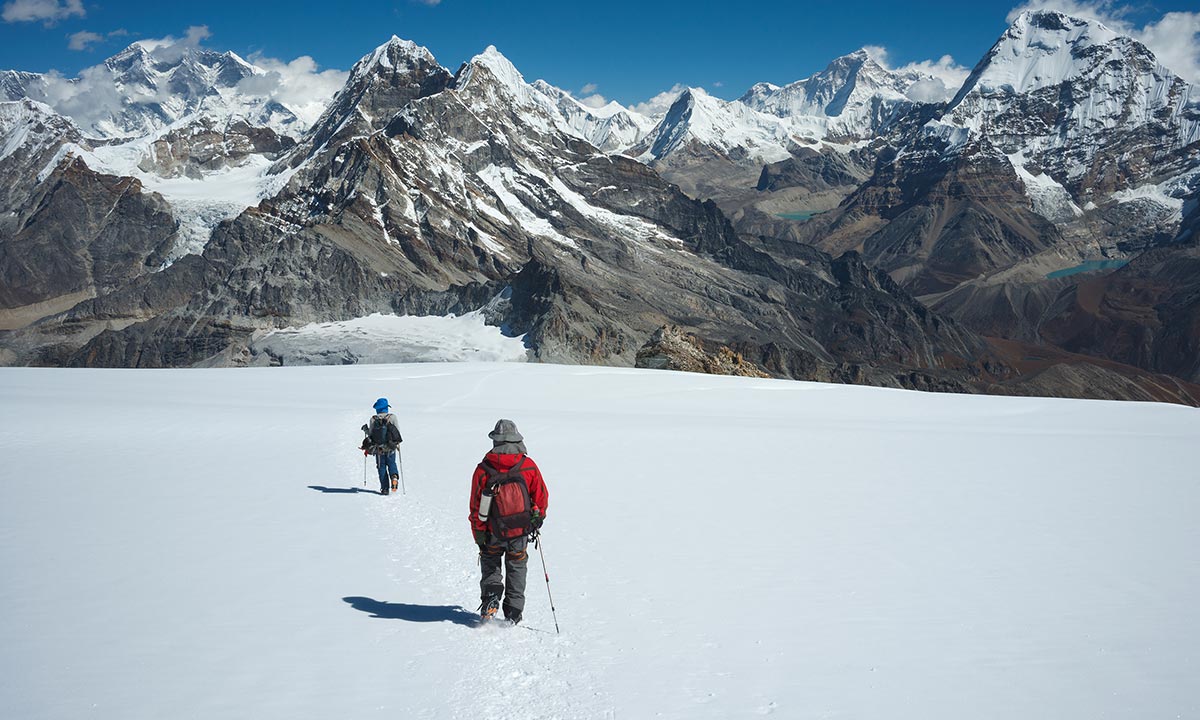
Mera Peak is going to take around 14 days in total to accomplish. The trek to Mount Mera is also known as the highest climbing trek in Nepal. The peak is situated in the Hinku Valley of the Everest region. The mountain’s route must be chosen very wisely as it determines how tough your climb is going to be. Your summit push is going to be till Mera High Camp at the height of 5,780m. Climbing the mountain is quite technical; hence, it is important for you to carry along adequate equipment. Likewise, your itinerary will go as follows:
Arrival in Kathmandu
On the first day of your arrival in Nepal, you will land at the Tribhuwan International Airport in Kathmandu. You will stay at a hotel and prepare for your hike there.
Fly to Lukla and trek to Chutanga
On your second day, you will fly from Kathmandu airport to Lukla. The flight is going to take around only 35 minutes. Likewise, when you trek from Lukla to Chutanga, you will spend around 4 to 5 hours doing so.
Chutanga to Thuli Kharka
When you trek from Chutanga to Thuli Kharka, you are likely to pass from Zatrwa La. The entire hike is going to take you around 5 to 6 hours in total.
Thuli Kharka to Kothe
From Thuli Kharka, you will finally trek towards Kothe. The entire trek is going to take from 6 to 7 hours in total.
Kothe to Thaknak
Kothe to Thaknak is going to take you 3 to 4 hours in total by trekking.
Thaknak to Khare
When you trek from Thaknak to Khare, you are going to trek yet again. The trek is going to be around 3 to 4 hours long.
Acclimatization Day at Khare
You will finally come to Khare, where you will get a chance to acclimatize and make it to the taller altitude of the Mera Peak. The acclimatization day is going to be all about resting. Khare is best known for its beauty and relaxing environment. You will also train for your trek when in Khare while acclimatizing. Further preparing for your trek is best possible here.
Khare to Mera High Camp
When you trek from Khare to Mera High Camp, you are going to spend around 5 to 6 hours in total. The high camp is not the summit, and your trek ascent won’t end here.
Mera Peak to Khare
This is going to be a bit of a challenge for the climbers because the day is going to be pushed to trekking of 11 to 12 hours. You will move from the Mera High Camp to the summit of the Mera Peak. Taking pictures and resting a while shortly whatsoever is going to take some of your time. Descending is easier, and you won’t stop at Mera High Camp but straight at Khare.
Contingency Day
You will spend a day at the Mera Peak as a contingency day, where you will undergo any contingency that has come or may come your way during your Mera Peak ascent.
Khare to Thuli Kharka via Kothe
This is another hectic day for you, which is going to take you from the acclimatization zone of Khare to Kothe. From Kothe, you will further trek to Thuli Kharka which is going to take you around 8-10 hours in total the whole day.
Zatrwa La Pass to Lukla
Finally, your trekking comes to an end with a final push to Zatrwa La Pass, from where you will reach Lukla. It is going to take you 5 to 6 hours to trek from the former to the latter.
Lukla to Kathmandu
You will fly from the Lukla Airport to the Tribhuwan International Airport. The flight does not take more than an hour.
Fly from Kathmandu
Finally, your whole Mera Peak trip and trek comes to an end completely as you fly from Kathmandu on the 14th day.
Mera Peak Weather
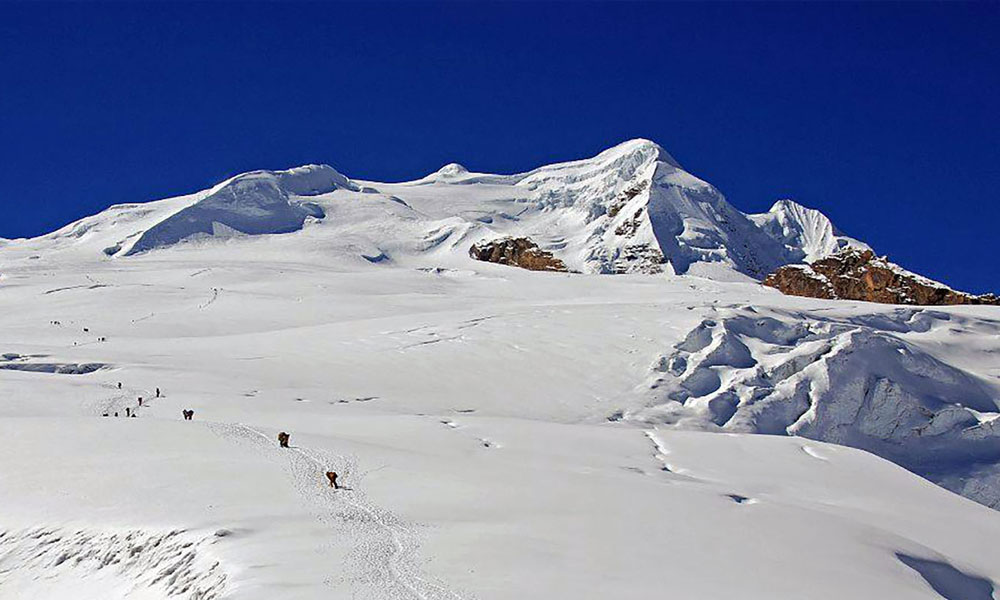
The weather at Mera Peak is not the same as the weather in hilly regions of Nepal. You will find slightly colder or warmer weather in comparison to any other place in the country when you are in Mera Peak because of the altitude in which it is located. Even during winter times, there is a likelihood for rain showers at the Mera Peak, and snowfall is just as likely all the way. During winter time, there is a high chance of the peak being covered by snow. Hence, this makes the mountain’s winter expedition all the more difficult. During summer, the air is humid and warm. A climber is likely to suffer the most during summer rain because of the bad trail and unforeseen events that come along with the bad weather.
What is the best time to go to Mount Mera?
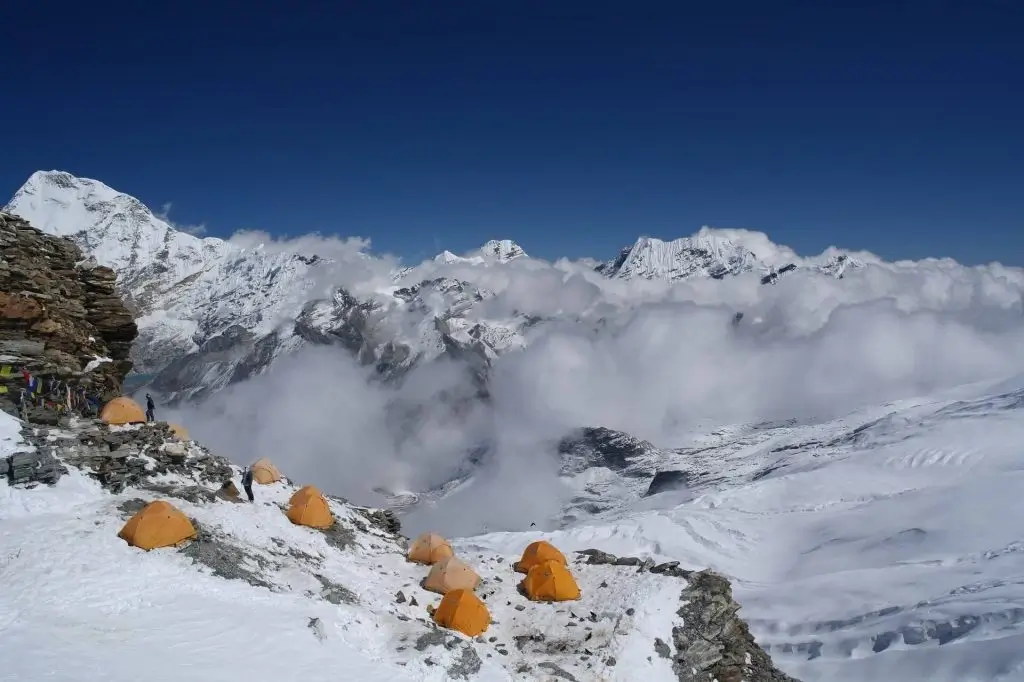
The best time to go to Mount Mera is during autumn or spring. Likewise, the worst time to go to the peak is during peak summer and winter. March, April, and May do not see as much rain or heat. Hence, it becomes perfect for people to explore the mountain when the sky and weather are both pleasant and in the favor of the climbers. During autumn months like September, October, and November, there are many climbers who come to the peak in order to trek or summit. The month has zero to less likelihood of rainfall. And you will not face extremely hot or extremely cold conditions in the mountains during these months. Also, there are a lesser number of people who are willing to make winter expeditions.
Is Mera Peak better than Everest Base Camp?
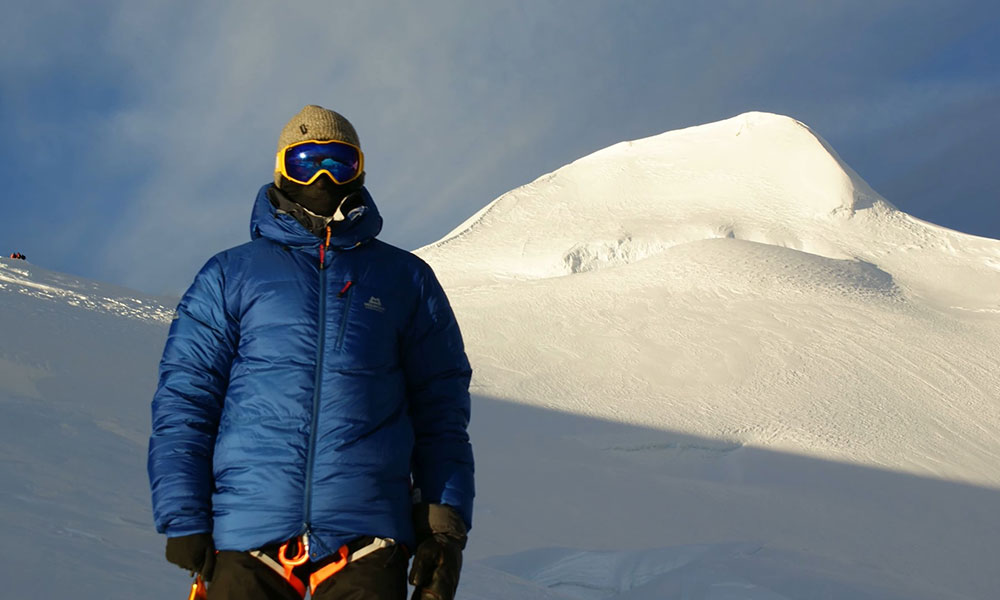
Mera Peak is at a higher elevation, as is the Everest Base Camp. Both the locations are famous for trekking. But people tend to crowd the Everest Base camp, while a lot of trekkers don’t really prefer Mera Peak over EBC. This makes Mera Peak a quieter location to summit and trek to. If you are looking for a peak to the summit but find Mount Everest difficult to climb, then Mera Peak is the mountain for you. Trekking to both locations can be tough as it is. However, Everest Base Camp is not as technical as Mera Peak.
Additionally, Mera Peak is going to take you longer to accomplish than Everest Base Camp. During your climb to Mount Mera, you are going to come through lush green forests, beautiful rural residents, and overall a very scenic view of the village, life, ruggedness, as well as the snowy caps of the peaks as you keep moving forward on your trail. If you push yourself enough, you will also reach the summit of the Mera Peak and be back in Kathmandu within a span of only 14 days. This is not the case when you go to Everest Base Camp. The most you will reach on your Everest Base Camp trek is Kala Pathhar, which is nowhere close to Mount Everest peak.
Frequently Asked Questions (FAQs)
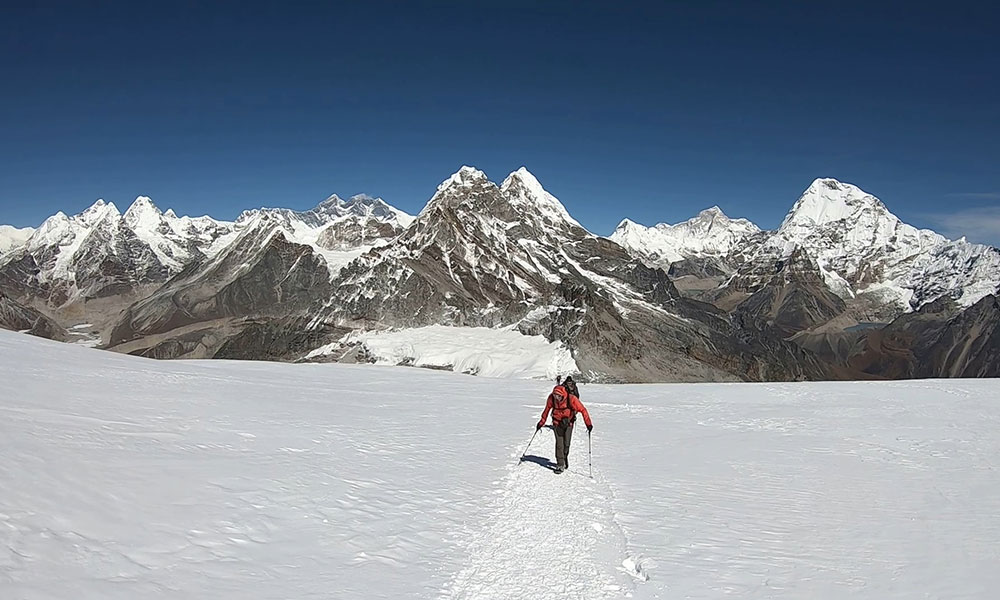
Can beginners climb Mera Peak?
With adequate training and strength building, a beginner will be able to climb the Mera Peak.
Can you see Everest from Mera Peak?
Since Mera Peak lies in the Everest region, it is possible to get a view of several mountains, including Mount Everest.
Is Mera Peak worth it?
Yes, climbing Mera Peak is definitely worth your time and effort as a climber.
What is the success rate of Mera Peak?
Mera Peak has a success rate of 90%.
Is the Mera Peak trek the toughest trek in Nepal?
No, the Mera Peak trek is not the toughest trek in Nepal, nor is the Dhaulagiri Circuit Trek.
Also, read;
